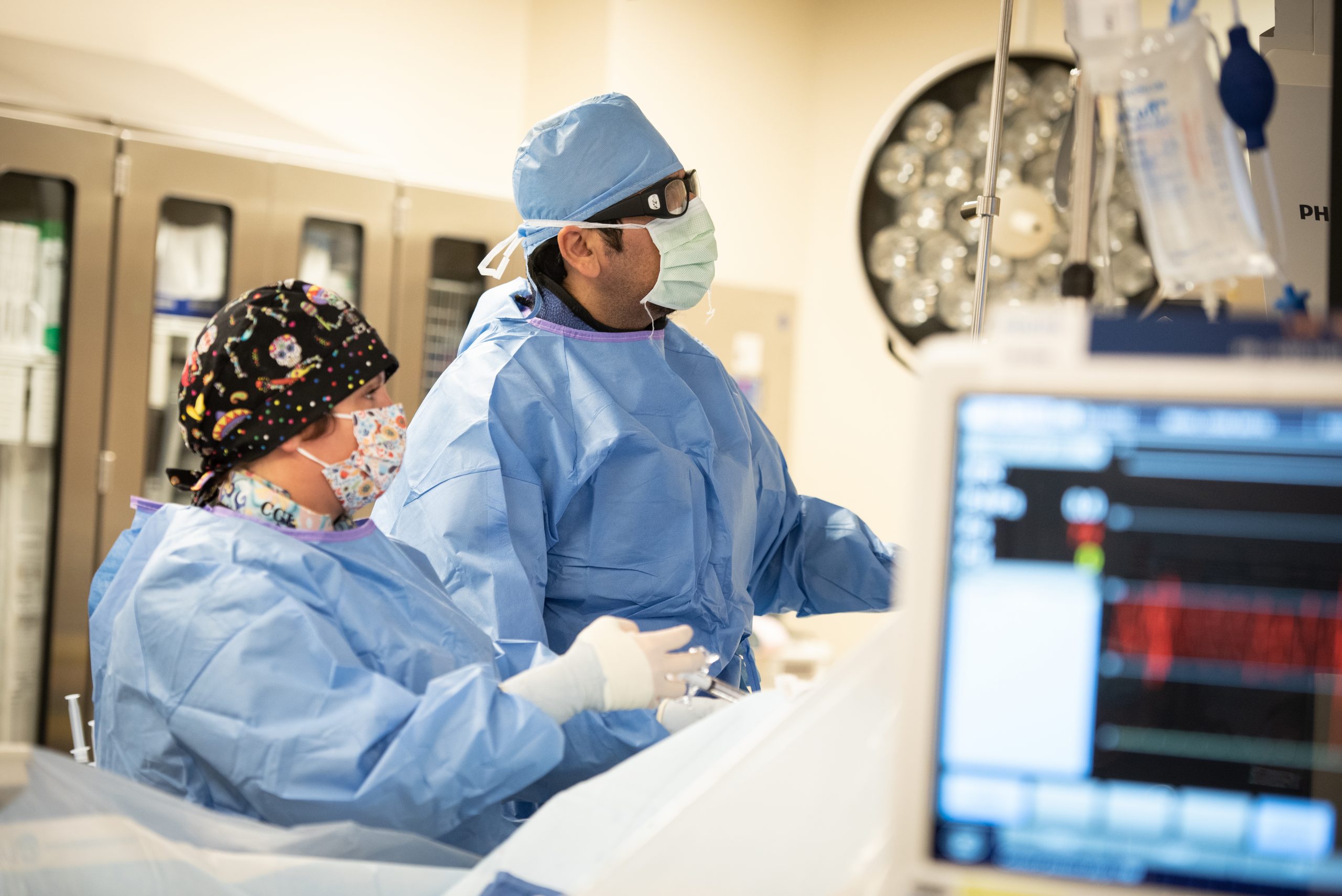At your last appointment with the cardiologist, you were told you needed to have a heart stent implanted. But what is a stent, and why do you need one?
Those are natural questions to have! Unless you have a medical background or know someone who has had a stent implanted, you probably don’t know the how and why associated with stents.
Since more than 2 million people in the United States have a stent placed each year, Nima Ghasemzadeh, MD, an interventional cardiologist with The Heart Center of NGMC walks us through the basics of heart stents.
What is a heart stent?
To put it simply, a stent is a tiny mesh tube that’s specially designed to be placed inside a coronary (heart) artery or peripheral (body) artery to keep it open.
Stents aren’t used solely in the heart. They can be used in blood vessels anywhere in the body that is in danger of becoming blocked, limiting blood flow or have become damaged or weakened (aneurysm). If blood flow is restricted to the brain, this is what causes a stroke, and if blood flow is restricted to the heart, this is what causes a heart attack.
Why is a heart stent placed?
When a fatty substance called plaque builds up in the coronary arteries, it can limit blood flow and weaken the blood vessel. A heart stent is placed to reinforce the structure of the blood vessel, and to preserve healthy blood flow to the heart muscle.
When plaque build-up is not treated, it can cause ischemia (lack of enough blood supply) or a narrowing and hardening of the vessel (atherosclerosis), both of which put additional strain on the heart and make the development of other heart diseases more likely.
Over time, plaque can become calcified (hardened) and in some cases, it may eventually cause a complete blockage. At first, plaque build-up may be classified as stable coronary artery disease, but an acute or sudden rupture of inflamed plaque can lead to abrupt closure of the artery. When this occurs, it manifests as a heart attack, which is an emergency situation.
Depending on the location and the extensiveness of the plaque build-up or blockage, angioplasty may be used, which is the opening of the artery with a specialized catheter. Oftentimes, as a part of this minimally invasive procedure, a stent will also be placed in that same artery to prevent future blockages and keep the vessel healthy long term.
How is a heart stent placed?
The use of angioplasty and stent placement is known as percutaneous coronary intervention, which is an extremely common way to treat plaque build-up and blockages in the coronary arteries.
During angioplasty, a balloon-tipped tube called a catheter is inserted into the body through either the groin or the arm and guided to the blocked artery. The balloon is then inflated, which pushes plaque to the sides of the artery and clears the blockage.
Your doctor may choose to place a stent in the area of the blockage. The heart stent is placed over the balloon catheter so that when the balloon is inflated, the stent expands and is secured in place.
Once an opening in the artery has been expanded, the balloon is deflated and the catheter is then removed, but the heart stent remains behind. The stent holds the artery open, allowing for improved blood flow to the heart muscle and relief of symptoms such as chest pain (angina).
Following an angioplasty and/or the placement of a heart stent, you’ll typically stay in the hospital for a few hours to ensure the small entry point in the groin or wrist has healed. You’ll then be discharged to home and advised to gradually return to activities, including exercise and work.
Heart Care to Love
At The Heart Center of NGMC, there’s so much to love about the exceptional care delivered by our dedicated team of more than 80 cardiologists and advanced practice providers. In addition to providing personalized care, our team of experts works to ensure a happier, healthier tomorrow. This goes beyond our comprehensive spectrum of services and innovative approach to ensure you have the tools and resources you need to lead a healthy life every day.


